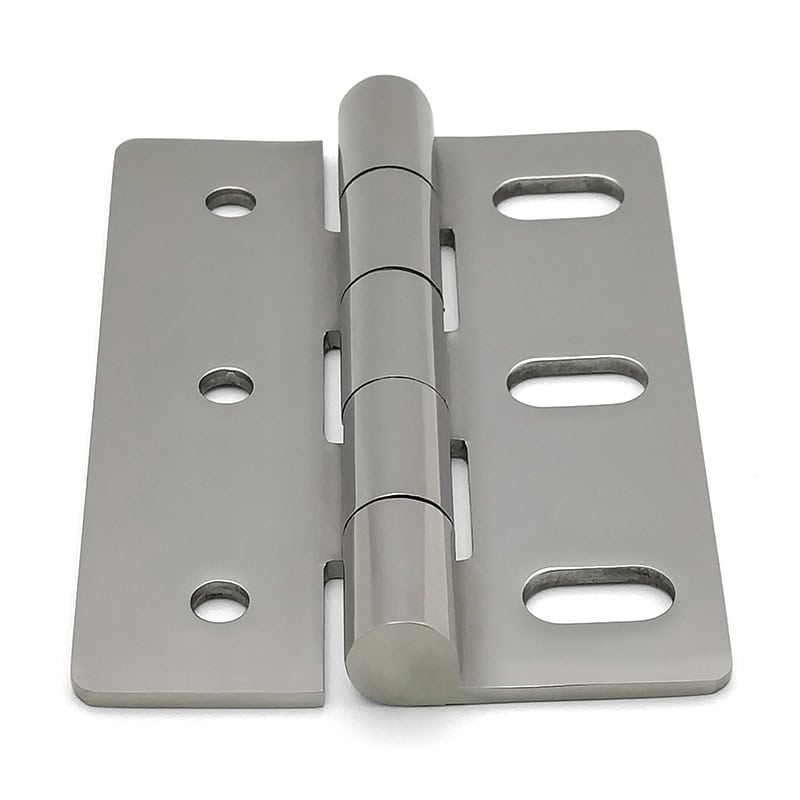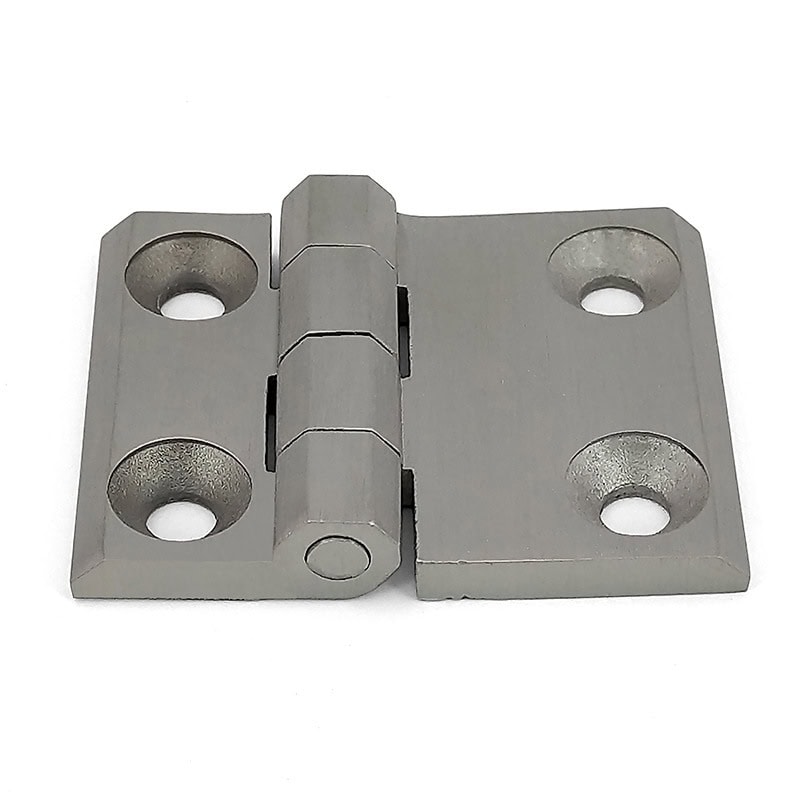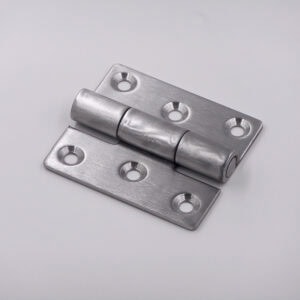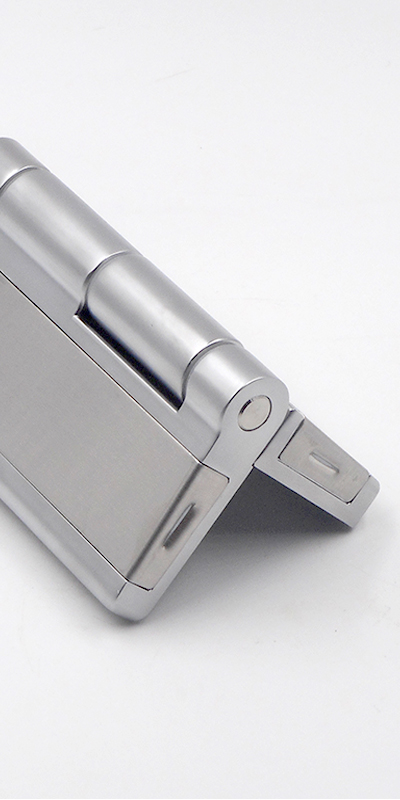Industrial door hinges are critical components in equipment enclosures, trailers, and heavy-duty machinery. When they fail, operational safety and performance can be compromised.
The easiest way to tell if it’s time to replace an industrial hinge is by checking for signs like misalignment, corrosion, structural fatigue, or a sagging door. Replacing hinges early can prevent costly failures and downtime.
Don’t wait until your equipment fails—these signs indicate your hinges may already be past their service life.
Cracks or Structural Deformation
Cracks, splits, or visible deformations in your hinges signal serious structural compromise.
Industrial door hinges showing visible cracks or bends should be replaced immediately to prevent equipment malfunction or safety hazards.
Cracks in an industrial hinge often result from excessive load or repetitive mechanical stress. For instance, trailer door hinges used on logistics equipment are subject to frequent opening and closing under weight, which can cause fatigue fractures. Once the integrity is compromised, the hinge may break entirely, causing costly damage to the door or surrounding frame.
Also, if you’re using lighter-duty alternatives like basic butt hinges in high-impact environments, the hinge may bend or deform under pressure. In these scenarios, replacing with heavy duty hinges or aluminum geared continuous hinges designed for endurance is the recommended solution. Conduct regular inspections, especially at weld joints and pin interfaces, where cracks tend to begin.
Sagging or Misaligned Doors
A door that no longer stays level usually indicates hinge failure.
If your door sags or drags on the floor, the hinge has likely lost its structural support and should be replaced.
Misalignment occurs when the knuckle or leaf of the hinge loses its holding strength. In environments using weld on hinges, repeated force on the joint (especially during transport or vibration) causes metal fatigue or shearing at the weld points. Over time, the door shifts from its designed axis, creating uneven gaps or friction.
Industrial applications—like climatic test chamber hinges—require absolute door precision to maintain internal environments. Sagging causes poor sealing, energy inefficiency, and test failure. If realignment and tightening no longer solve the issue, switching to a new hinge—possibly with reinforced mounting—is necessary.
Engineers should also consider installing corrosion resistant hinges if environmental factors like humidity or temperature fluctuation are contributing to the distortion.
Corrosion or Rust Buildup
Rust isn’t just cosmetic—it compromises the mechanical function of a hinge.
If rust is present on the hinge pin, leaf, or mounting screws, the hinge should be replaced with a corrosion-resistant model.
Industrial doors—especially outdoor enclosures and marine equipment—are highly susceptible to corrosion. For instance, marine hinges used on coastal containers or ship-based systems must resist saltwater exposure. When hinges are not made from rust-resistant alloys or protected finishes, oxidation sets in quickly, degrading the hinge’s ability to rotate or support the load.
Using outdoor industrial hinges made from stainless steel or anodized aluminum helps prevent this issue. In some cases, when corrosion is only surface-deep, cleaning and lubricating can extend hinge life. However, if the hinge movement is stiff, or rust has eaten into the knuckle or pin, immediate replacement is the safest choice.
Also, consider switching to aluminum hinges for a lightweight but corrosion-resistant solution in humid environments.
Excessive Vibration or Rattling Noise
Noisy or shaky hinges are often overlooked but can signal early-stage failure.
Industrial hinges that produce vibration or noise are often loose, worn out, or mismatched to the door weight—replacement is advised.

In machinery or heavy enclosures, constant vibration can cause mounting screws to loosen or cause uneven stress distribution. This leads to subtle but damaging misalignments. Hinges like detachable hinges may also lose their grip over time, increasing the risk of mechanical play or detachment under dynamic loads.
Noises such as squeaking or rattling are not merely annoyances. They point to gaps between the knuckle parts or wear on the hinge pin. If not fixed, this can cause accelerated wear and failure. In vibration-heavy equipment—such as HVAC units, lab ovens, or mobile trailers—selecting staked hinges or take-apart hinges designed for high-cycle environments can ensure reliability and quieter performance.
Regular hinge maintenance schedules should include noise inspection and hinge stability tests.
Frequent Repairs and Lubrication Are No Longer Effective
If you’re constantly repairing or lubricating a hinge, it’s time to move on.
When hinge maintenance no longer resolves recurring issues, a complete replacement with a higher-grade hinge is the best solution.
Hinges have a defined life cycle. While industrial hinges last longer than residential ones, they are still prone to wear over time. If lubrication doesn’t stop squeaks, or if the hinge repeatedly loosens or jams despite adjustments, it has likely exceeded its designed tolerance.
This is especially common in enclosures using piano hinges—which offer long support but wear down gradually across the length. If friction increases or motion becomes uneven, the issue might be along an internal segment that can’t be serviced individually. Replacing with special hinges tailored to your operating environment or duty cycle helps avoid repeated downtime.
Maintenance records should include hinge replacement intervals, especially for temperature-sensitive installations like cold storage room hinges.
Conclusion
Timely hinge replacement is essential for maintaining industrial equipment safety and efficiency—don’t ignore the warning signs.





